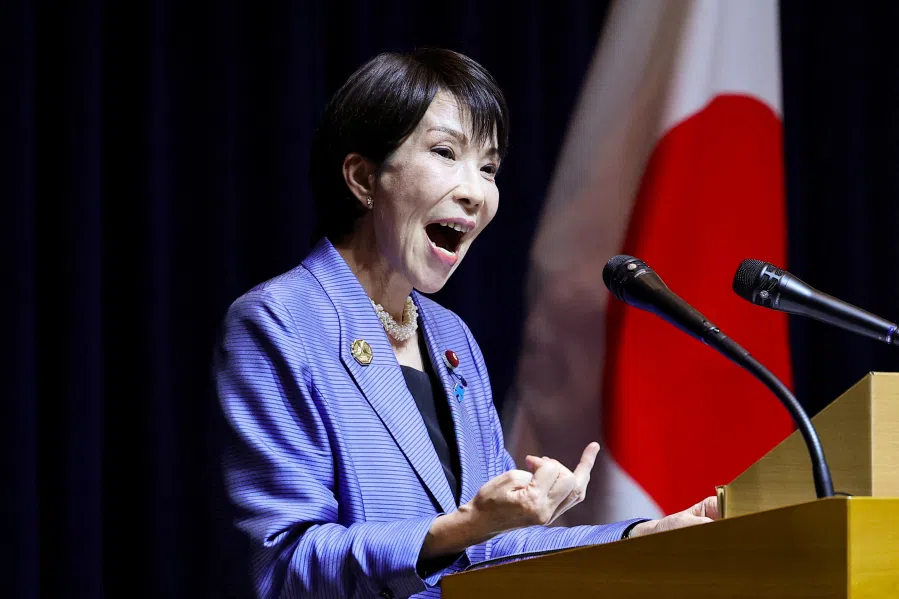Can the Western bloc survive Trump’s transactional politics?
UK academic Zeno Leoni believes that the Western bloc is not going to fragment in two blocs just yet, but it is going to be less driven by values and based on “transactional” principles, leaving Europe with much strategising to do.

Transatlantic relations have never been so tense since NATO was established after the end of World War II. US President Donald Trump stated at the end of February that “the European Union was formed in order to screw the United States”. Then, after announcing that it would impose tariffs on Canada, he threatened to impose 25% tariffs on imports from the EU.
Last but not least, the Trump administration excluded the EU from preliminary talks between the US and Russia in Riyadh, where Secretary of State Marco Rubio and Russian Foreign Minister Sergey Lavrov met to start talks that to led to a meeting between Trump and Russian President Vladimir Putin, and clearly alluded to the fact that Ukraine will have to give up any hopes of recovering territories lost before or after 24 February 2022.
While doing so, Trump halted any new military assistance to Ukraine and suspended intelligence sharing — although compared to his first mandate, the US president has been less vocal about NATO being “obsolete”.
These developments culminated in a grotesque live TV show during which Zelenskyy was accused by Trump and Vice-President JD Vance of being responsible for undermining the peace process, and made many observers conclude that the trajectory of US foreign policy towards Europe might undermine the trans-Atlantic bloc.
Since the beginning of the war, the EU has followed the US’s political and military lead and has not emerged as a neutral peace mediator. Therefore, it was unrealistic to expect Brussels to play a key role at the negotiating table.
Is this Europe’s nightmare?
These unprecedented events pose important questions for the transatlantic alliance. Firstly, is the latter facing an existential crisis, or what The Economist defined as Europe’s worst nightmare?
While in the long-term diplomatic turbulence caused by Trump may lead to greater European military and political autonomy, in the short term, the assessment of the British magazine is a correct one: Trump’s stance not only runs against all the financial and military efforts expended by NATO over the last three years, but also strengthens Russia’s position at the negotiating table. Additionally, it raises uncertainty about whether the US will continue to support European deterrence in the future. The exclusion of the EU from negotiations, furthermore, has undermined any credibility of the EU as a geopolitical player in the international arena.
Since the beginning of the war, the EU has followed the US’s political and military lead and has not emerged as a neutral peace mediator. Therefore, it was unrealistic to expect Brussels to play a key role at the negotiating table. Much of the shock expressed by European leaders, including at an emergency summit in Paris on 17 February, can be said to display a degree of play-act.
What can and will Europe do about this?
European Commission President Ursula von der Leyen proposed the ReArm Europe plan, which involves raising about €800 billion (US$860 billion). The way to get to this amount of money is to allow states to increase defence spending by 1.5% of GDP on average.
This plan, however, is not without challenges. Firstly, many analysts are arguing that to increase defence spending, European countries will have to decrease their social welfare budget, a measure that is likely to increase inter-European social resentment, with the potential of leading to further political divisions within the EU.

Secondly, spending such an amount of money without previously having accomplished a greater degree of political and military integration across the continent, may ultimately play in favour of NATO, and therefore of the Trump administration — whose attacks on Europe may still be considered as a negotiating tactic, as opposed to a real threat of abandoning the continent. Overall, however, it may take up to four years to raise the necessary capital for ReArm.
Thirdly, some European countries may decide that this is too costly, or that Russia is not a threat — as in the case of Hungary.
From a more immediate operational perspective, in the meantime, what are Europe’s options? It was argued that the weakest spot for NATO countries remains the border between Russia and the Baltic states. Experts believe that US support, should this not be available, could be compensated with the deployment of three divisions of 15,000 troops each by the UK, France, and Germany, for a total of 45,000 troops, “combined with heavily fortified borders, would give a good fighting chance against Russia even without American help to defend the Baltic states until NATO reinforcements arrive”. This, however, leaves open the question of supporting a peacekeeping mission in Ukraine, should the conditions for this materialise.
Ukrainian President Volodymyr Zelenskyy has requested a presence of 200,000 troops. However, experts have noted that Europe may need much less to ensure that the lines drawn at a peace deal will be respected. According to a general, 20,000 may be enough: this would involve a combat brigade of 3,500 troops in addition to “two to three times as many uniformed individuals in support and several thousand more personnel to provide airpower capabilities”.
Alternatively, at the cost of between US$20 and US$40 billion a year — according to estimates based on what South Korea and Israel spend — with “continued Western arms supplies, intelligence support, and training” Ukraine could defend itself.
This, ultimately, might go towards confirming that a US under Trump does not necessarily mean that the US will not lead, but that it will lead on its own terms, amidst a divided EU.
Implications for a new world order: the end of a Western bloc?
This article’s author has recently argued that the world order is dividing in geopolitical blocs, with a confrontation between a Western bloc led by the US and an Eastern bloc centred on the Russia-China partnership. With everything described above, a big question arises: is this the end of the Western bloc?
Although this is a fast-evolving scenario, it is still unclear whether the Trump administration will remove its troops from Europe, although the US president has continued to threaten this. Trump has not yet openly criticised NATO, while it seems keen to attack the EU — which he said was designed to “screw the US”. This is not a minor nuance. This, ultimately, might go towards confirming that a US under Trump does not necessarily mean that the US will not lead, but that it will lead on its own terms, amidst a divided EU.

Meanwhile, it remains to be seen how far European leaders will go towards the development of a European military force that is autonomous from NATO, and, therefore, from the US. This could be evinced by the recent visit of both France’s President Emanuel Macron and Britain’s Prime Minister Keir Starmer.
Although Macron received no substantial promise from Trump, he walked away from the meeting calling it a “turning point” and praising the US president for pursuing peace with Russia, while cautioning him. Meanwhile, Starmer even after the meeting with Trump, has continued to call for “strong US backing” of any Europe-led peacekeeping mission. Italian Prime Minister Giorgia Meloni, following the diplomatic incident between Trump, Vance, and Zelenskyy, called for an “immediate summit between the United States, European states and allies” to tackle current challenges, as “a division would not suit anyone”, she stated. Last but not least, days after the falling out at the White House with Trump and Vance, Zelenskyy actually admitted that “regarding the agreement on minerals and security, Ukraine is ready to sign it in any time and in any convenient format”.
For the time being, a cautious prediction suggests that the Western bloc is not going to fragment in two blocs. However, it is going to be less driven by values and based on “transactional” principles, with the US judging the convenience of being in a relationship with European countries based on their “strength and weaknesses” and on “what they bring materially to the relationship”.
Furthermore, as a researcher argued, it is not clear yet to what extent Trump’s policies towards Europe are informed “by contradictory impulses or by a deliberate strategy”. As the US Secretary of Defense Pete Hegseth stated at the Ukraine Defense Contact Group, “The United States remains committed to the NATO alliance and to the defence partnership with Europe”.





![[Big read] China’s 10 trillion RMB debt clean-up falls short](https://cassette.sphdigital.com.sg/image/thinkchina/d08cfc72b13782693c25f2fcbf886fa7673723efca260881e7086211b082e66c)